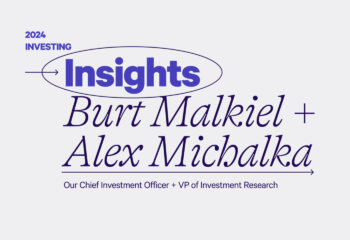In the words of George Washington, “No taxes can be devised which are not more or less inconvenient and unpleasant.” In other words, taxes are a pain. We know it, you know it, but whether you like it or not, tax day (Tuesday April 18th) is less than a month away, so it’s time to get your documents together for filing. To ease some of the pain we’ve put together a checklist to help you get prepared.
Collect all your Form 1099s
All bank and brokerage accounts issue Form 1099s that list dividend and interest income earned on your accounts and any securities you might have sold. If you have accounts that hold mutual funds or ETFs then it is highly likely that the fund companies will issue their initial 1099s in late January or early February and then revise their 1099s closer to the tax deadline. These revisions are based on a more accurate accounting of their underlying securities’ qualified and unqualified dividends. Unfortunately, many people who own funds mistakenly think the revision is the fault of the brokerage firm, which is seldom the case. We know this likely results in having to file your taxes later and therefore receiving your refund later, but there is nothing we can do about it. The revisions are usually very small, so it may be worth taking the risk of an audit to file early and not worry about refiling based on the updated 1099s.
By the way, you don’t have to enter every single security sale transaction in your IRS Form 1040, your primary tax filing. You can just enter a summary of your gains and losses as long as all your 1099s provide short vs. long term gains, sale prices and the cost basis for all sold securities. Companies like Wealthfront make this process easy by enabling you to electronically download all your transaction gains and losses in an electronic spreadsheet or directly into your TurboTax or H&R Block software.
Identify your harvested losses
If you have a taxable account with Wealthfront, our daily Tax-Loss Harvesting and Stock-level Tax-Loss Harvesting features can possibly lower your taxes depending on your tax situation. Your investment advisor should provide a summary of all your harvested losses that you can either apply to reduce your capital gains or up to $3,000 of ordinary income. Unused losses can be carried over to future tax years. Properly including the Form 1099 with your tax return is all that’s required to claim the tax savings benefit of Wealthfront’s Tax-Loss Harvesting and Stock-level Tax-Loss Harvesting.
Check for Qualified Small Business Stock (QSBS) exclusion
If you liquidated an angel investment last year, you may qualify for this. As you can see in Qualified Small Business Stock Is An Often Overlooked Tax Windfall, QSBS status can make an enormous difference in the amount of taxes you owe on your sale. The CFO of the company whose stock you sold is the ideal person to answer this question. Please keep in mind that it only applies to private company stock.
Check if you qualify for an energy credit
You should receive a credit if you installed a qualified geothermal heat pump, a small wind turbine or fuel cell property before last year end. For more information on what qualifies for the credit please see Residential Energy Efficient Property Credit (Section 25D) at a Glance.
Check if you exercised stock options before year end
If you exercised your options after December 31st, you are still required to pay estimated taxes on the transaction on April 18th. For more information on how stock options are taxed please see Improving Tax Results for Your Stock Option or Restricted Stock Grant, Part 1.
Max out your IRA
People under 50 are allowed to contribute up to $5,500 per year to their traditional or Roth IRA and people over 50 may invest up to $6,500 per year. People who qualify for a SEP IRA may contribute up to the lesser of 25% of your compensation or $53,000 per year.
The really good news is any contributions you make this year to a Traditional or SEP IRA can be deducted from last year’s taxes as long as you don’t go over the limit. So if you have any spare money laying around, you should take advantage of this attractive feature – that is unless you need the liquidity.
You’ll have to submit your contribution by Wednesday, April 12th at 9am Pacific if you are a Wealthfront client. By the way, you should receive a Form 5498 that lists your IRA contributions in late May. Don’t worry, your Form 5498 is for informational purposes only and therefore is not required to be filed with your tax return.
We hope you find this list useful. Please let us know if you have any other suggestions we should share with our readers.
Disclosure
Nothing in this blog should be construed as tax advice, a solicitation or offer, or recommendation, to buy or sell any security. This blog is not intended as investment advice, and Wealthfront does not represent in any manner that the circumstances described herein will result in any particular outcome. Investment advisory services are only provided to investors who become Wealthfront clients. This blog is not intended as tax advice, and Wealthfront does not represent in any manner that the outcomes described herein will result in any particular tax consequence. Prospective investors should confer with their personal tax advisors regarding the tax consequences based on their particular circumstances. Wealthfront assumes no responsibility for the tax consequences to any investor of any transaction. Investors and their personal tax advisors are responsible for how the transactions in an account are reported to the IRS or any other taxing authority. For more information please visit www.wealthfront.com or see our Full Disclosure.
About the author(s)
Andy Rachleff is Wealthfront's co-founder and Executive Chairman. He serves as a member of the board of trustees and chairman of the endowment investment committee for University of Pennsylvania and as a member of the faculty at Stanford Graduate School of Business, where he teaches courses on technology entrepreneurship. Prior to Wealthfront, Andy co-founded and was general partner of Benchmark Capital, where he was responsible for investing in a number of successful companies including Equinix, Juniper Networks, and Opsware. He also spent ten years as a general partner with Merrill, Pickard, Anderson & Eyre (MPAE). Andy earned his BS from University of Pennsylvania and his MBA from Stanford Graduate School of Business. View all posts by Andy Rachleff



